The town of Peterhof was known as Petrodvorets when I came in 1975 and has changed its name to Peterhof at some time since then. I can’t help wondering whether Boris Yeltsin changed it to suck up to the Germans and attract German tourists (and money). We got into the Rear Park through a gate opening onto the main road and walked down to the palace past large ponds which had been drained of water. Entry into the palace cost 2,000 roubles (£19) each which, for Russia is a staggering amount. Especially as the fountains weren’t working and the Grand Cascade, the most iconic feature of the site, wasn’t working. The Hermitage cost £5 and was 10 times better. However Peter’s Palace was magnificent, despite the need for us to put on silly shoe-covers to protect the floors.
There are plenty of road signs to tiny little villages, some of which may even have been abandoned as people migrate to the towns, but precious few signs to major cities like Pskov. We were driving along a beautiful road when I saw a sign pointing left to Pskov, then continued along a bumpy road until I realised we were lost. A friendly woman at a Pyatirochka supermarket pointed back the way we had come and, having seen a sign which showed we were on the right road, we stopped at a service station on the edge of the small town of Gdob, ate a virtually inedible meat pie, and then had a good night’s sleep.
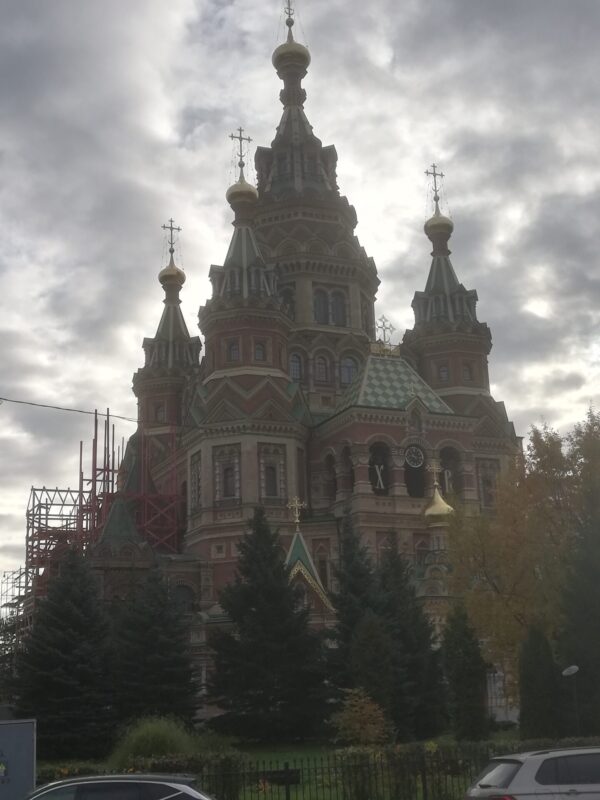
A church on the main road near the Palace entrance
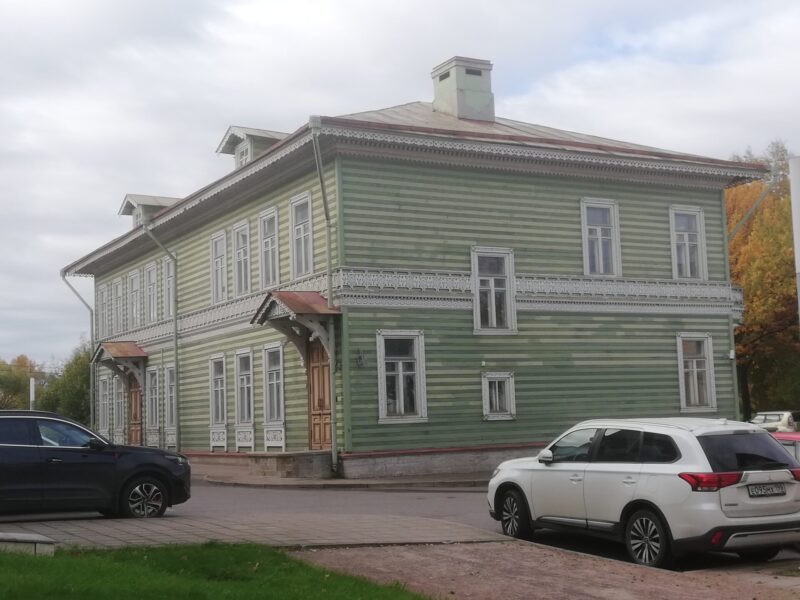
Typical Peterhof architecture
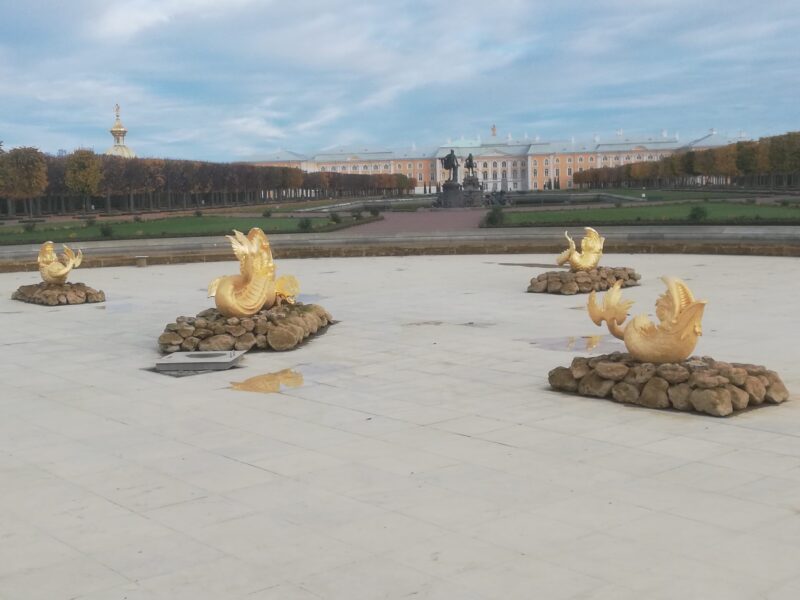
A dry pond in the Rear Garden. I think the gilt fishes might be fountains
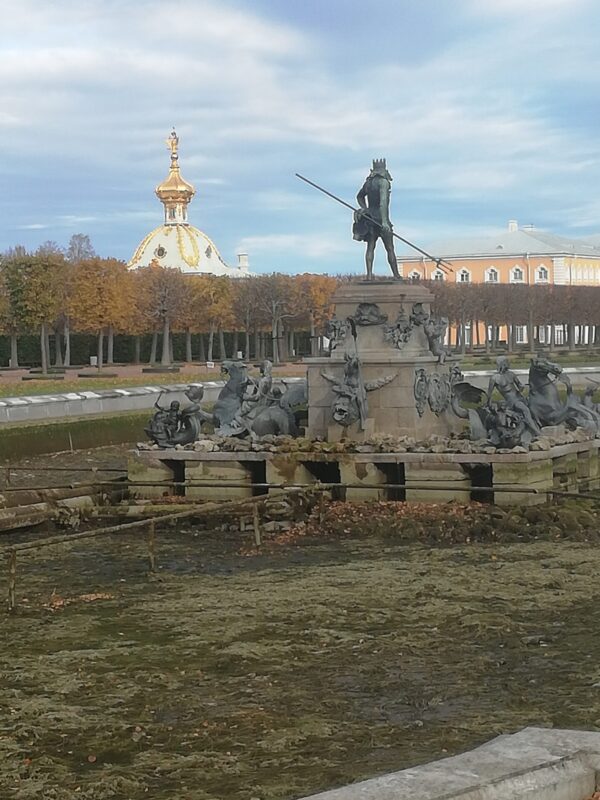
A large dry pond with a statue of Neptune

A church at the eastern end of the palace. It includes a magnificent iconostasis and Nikolai II’s throne. However it is only open at weekends.
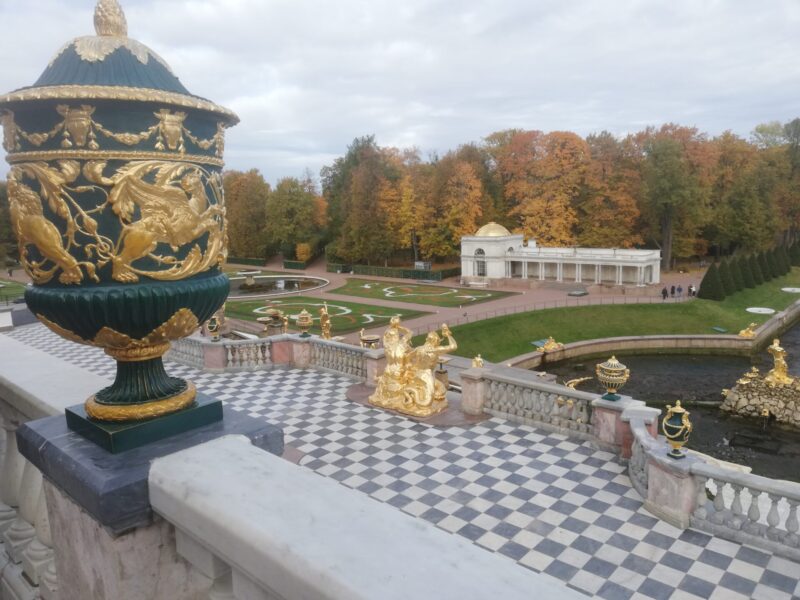
A light at the top of the Grand Cascade.
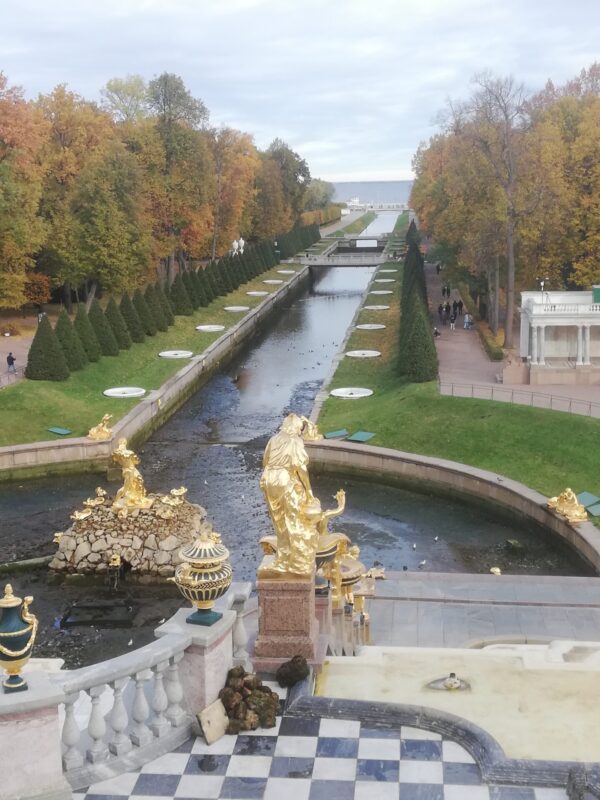
The Grand Cascade of fountains (not working)
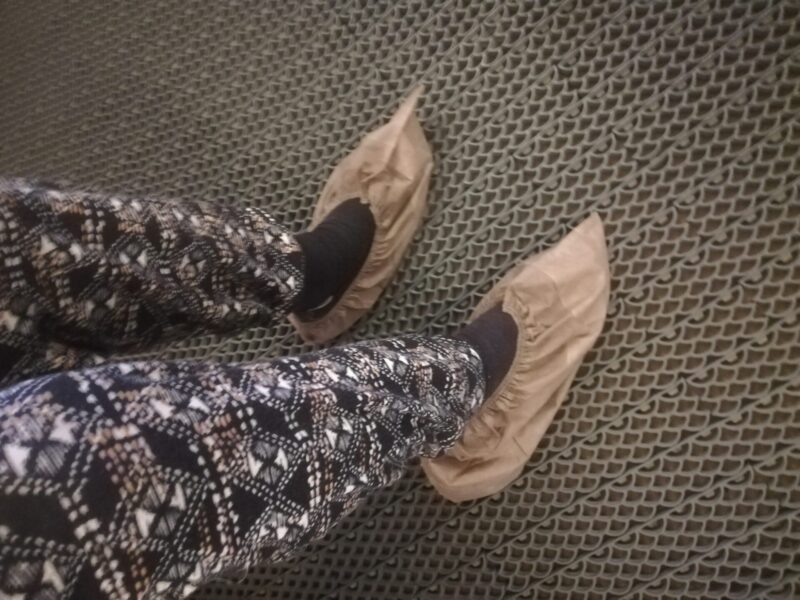
Jennifer’s new shoes
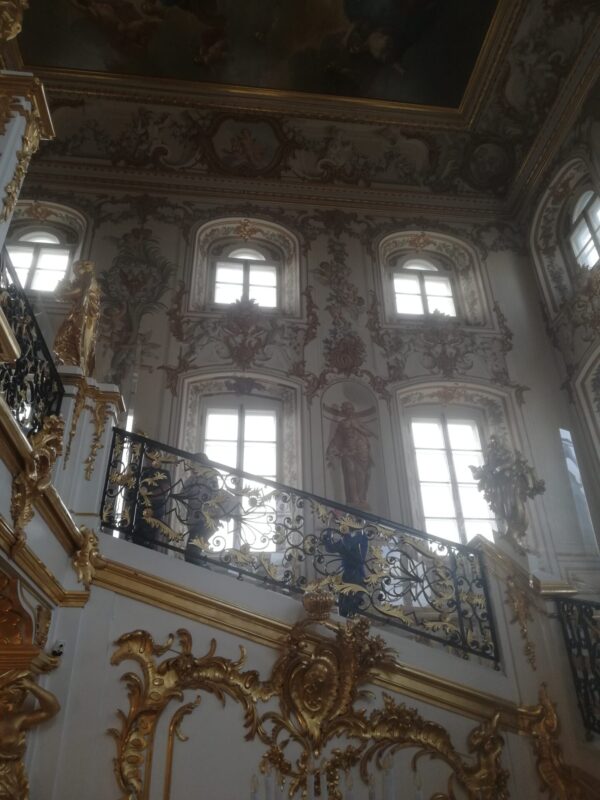
The stairs up to the rooms.

The top of the stairs
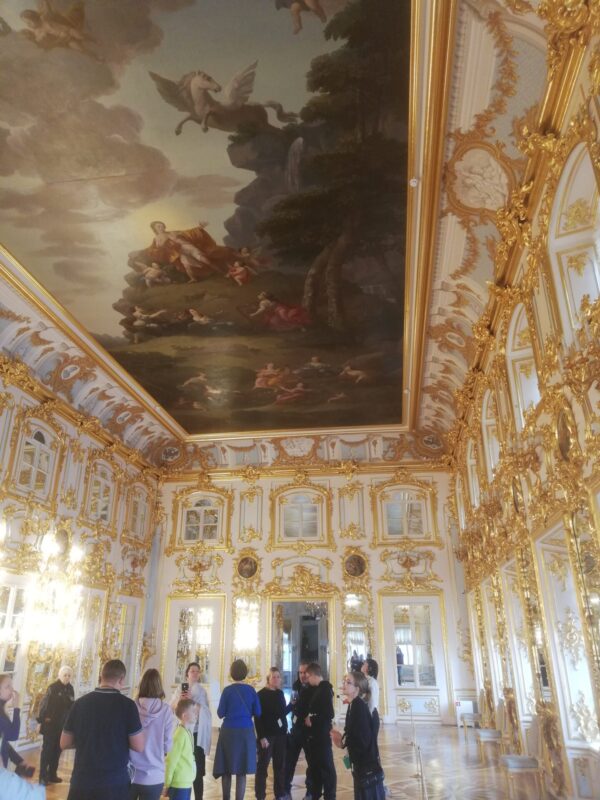
The Ballroom

The Blue Reception Room

Painting on the ceiling of the Chesme Room
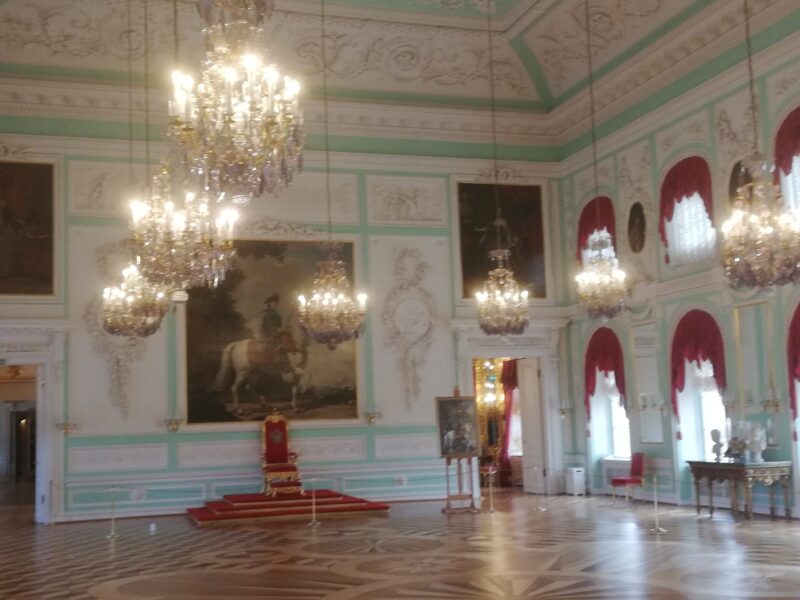
The Throne Room
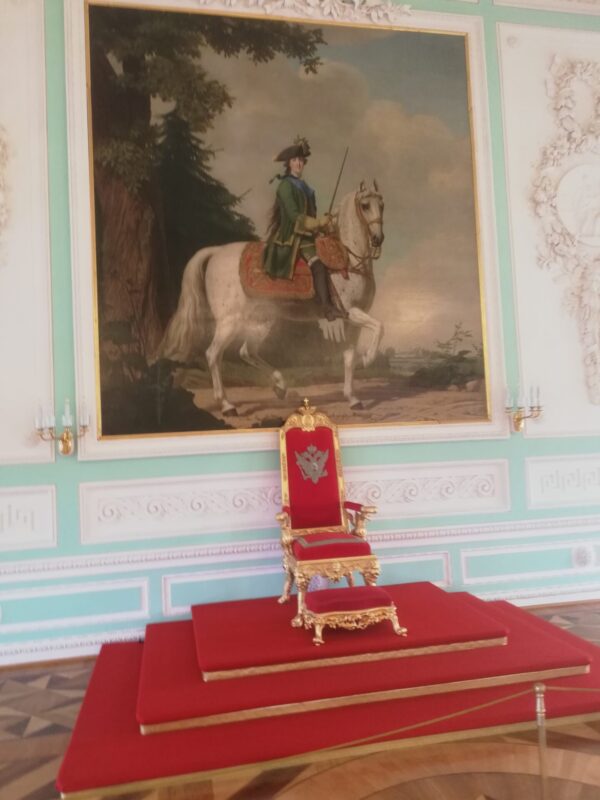
Portrait of Catherine III
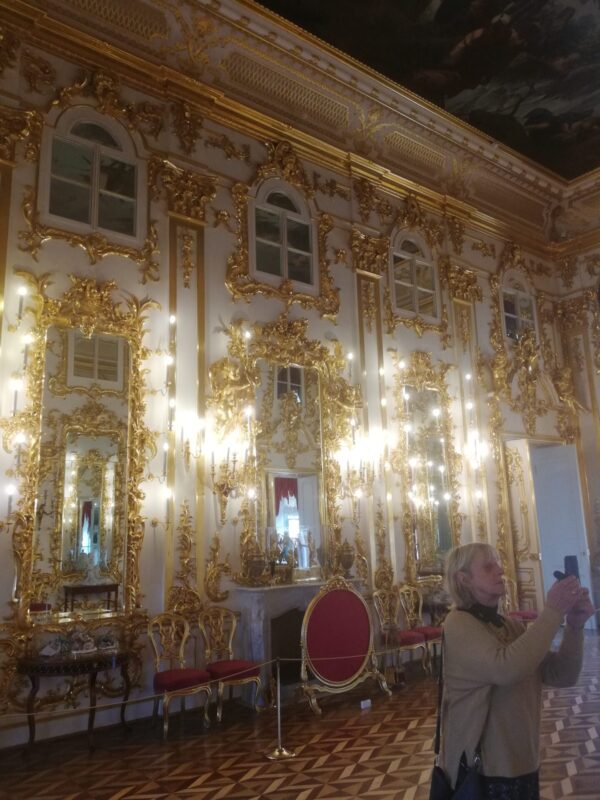
The Audience Hall (Room for Ladies in Waiting

The White Dining Room (commissioned by Catherine II in 1768, crockery by Wedgewood.
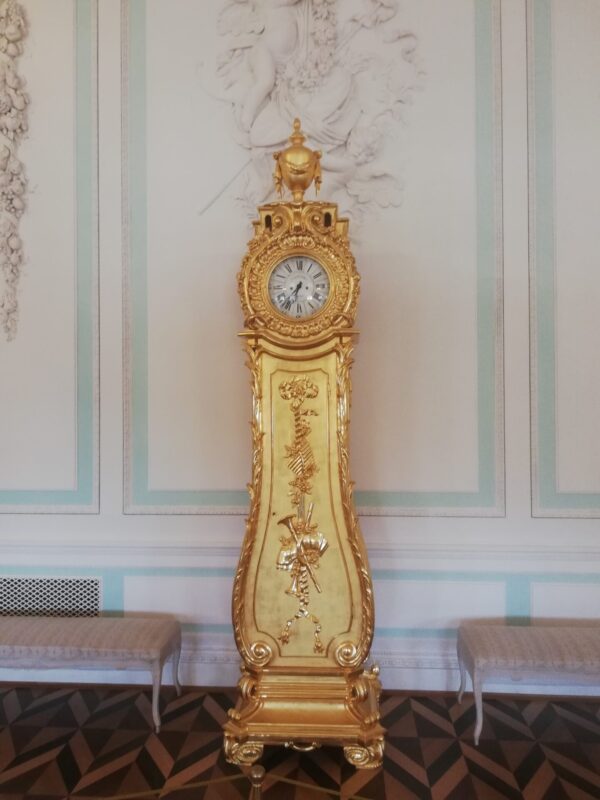
Clock in the White Dining Room
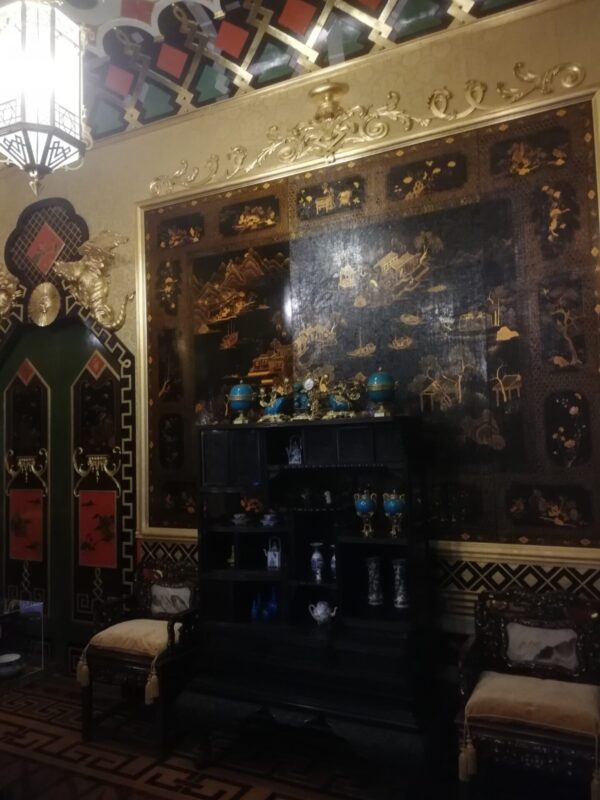
The Chinese Cabinets Room
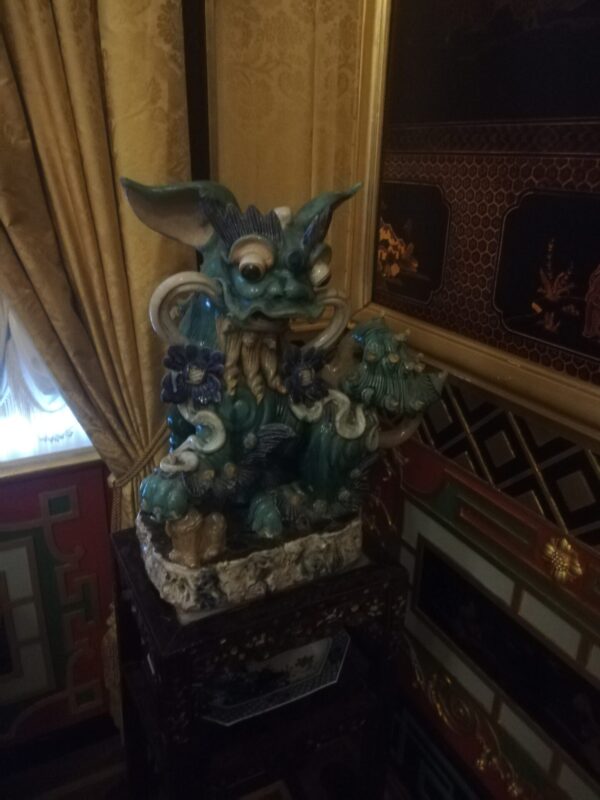
Porcelain Chinese foo dog in the Chinese Cabinet Room
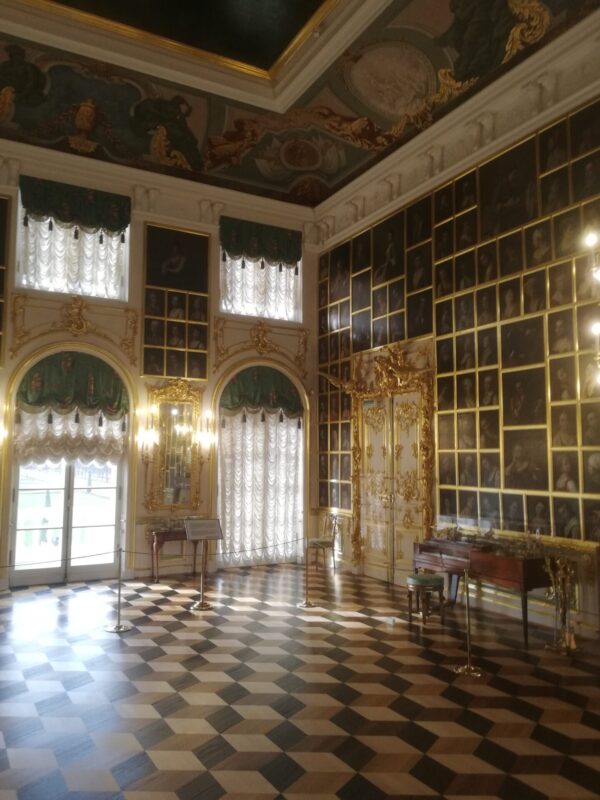
The Picture Hall
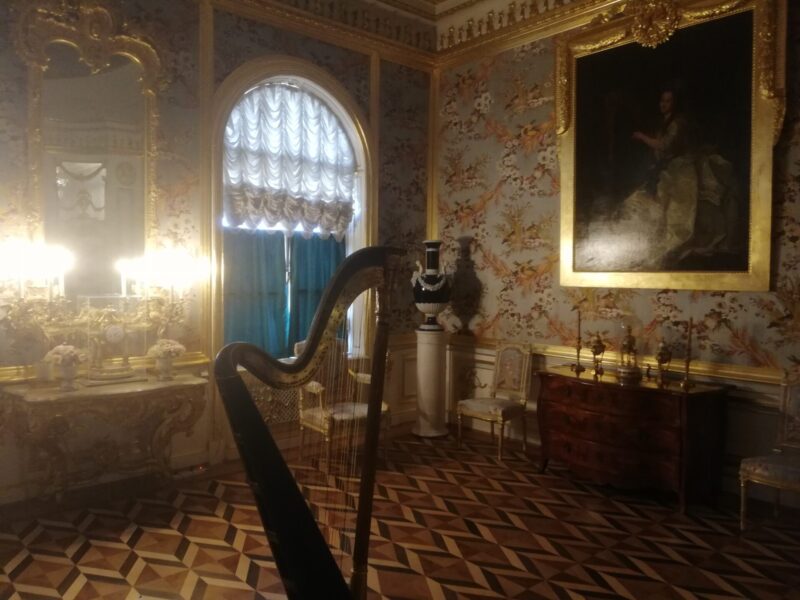
Harp in the Partridge Room

The Divan Room
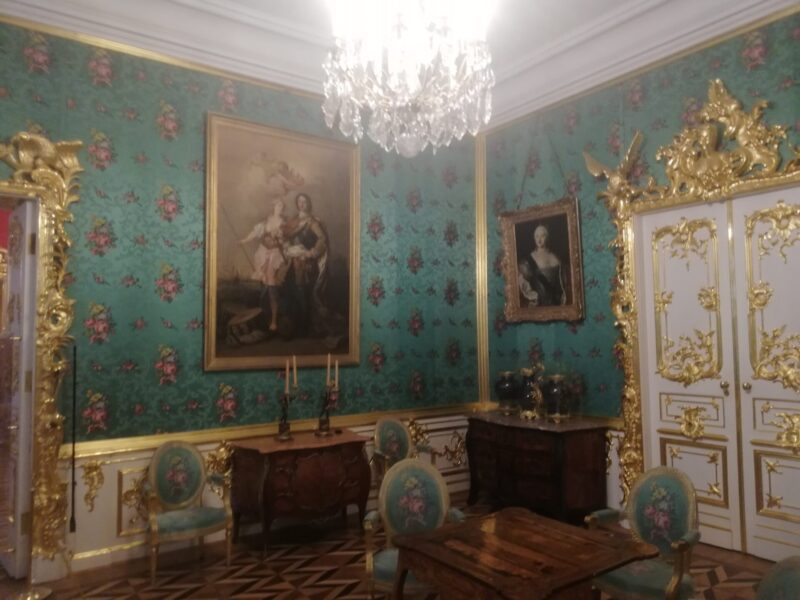
The Dressing Room

Stove in the Dressing Room

The Large (Blue) Drawing Room
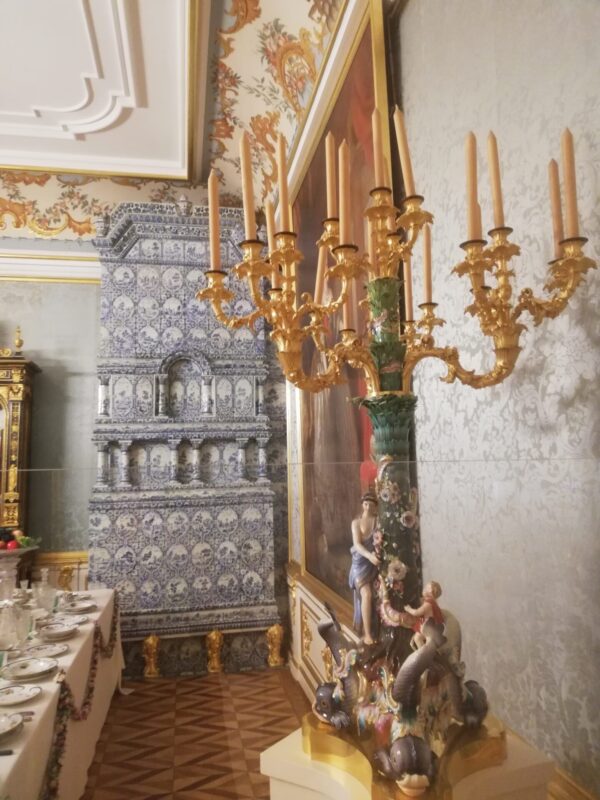
Stove in the Large (Blue) Drawing Room
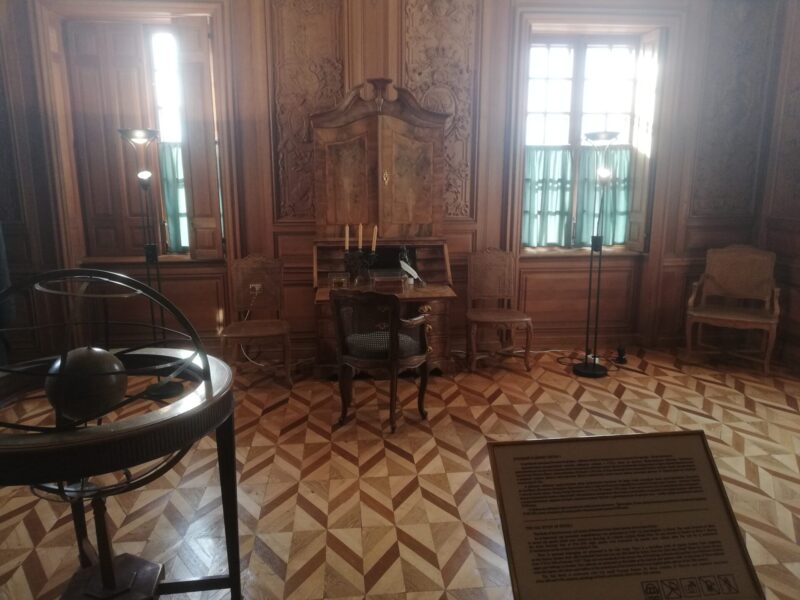
The Oak Study of Peter the Great, oldest room in the palace